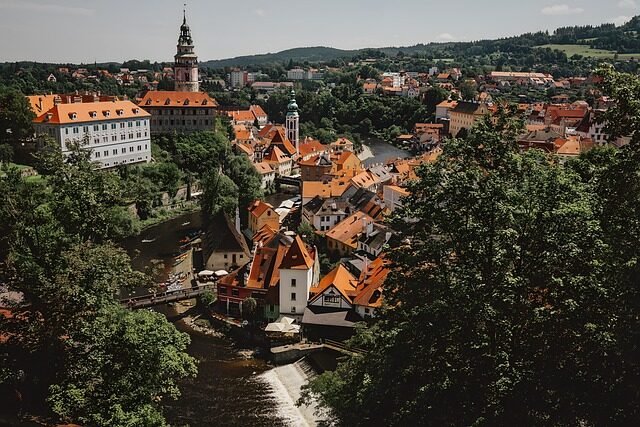As spring unfolds in the Nordic lands, a special day known as Sommerdag ushers in the warmer half of the year. Not just a marker of seasonal change, this day is steeped in tradition and cultural significance. With the weather as a prophet for the year’s success, celebrations are imbued with hope and festivity. Central to these occasions is the comfort of Fløyelsgrøt, a creamy porridge that embodies the region’s culinary heritage and brings a sense of nostalgia to many.
What is sommerdag and why is it celebrated?
Marked annually on April 14, Sommerdag signals the onset of summer in Nordic countries, particularly in Norway. It is a day rich with pre-Christian roots, where nature’s revival is symbolized through a tree or twig on the primstav, an ancient calendar stick. Traditionally, it was a time of work bans and half-day holidays, when cows joyously trotted to summer pastures. The day’s weather was thought to predict the upcoming harvest and fishing prospects, making it a day observed with keen interest.
Sommerdag celebrations have evolved, but the essence remains—acknowledging the end of winter’s grip and welcoming the life-giving sun. Families gather, outdoor activities are enjoyed, and of course, traditional foods are at the heart of the festivities.
Incorporating traditional Norwegian Fløyelsgrøt into Sommerdag is a way to honor past traditions while indulging in the creamy delight of this cherished dish.
How is Fløyelsgrøt made?
The making of Fløyelsgrøt is a testament to simplicity and comfort. It begins with high-quality butter melted in a pot, followed by the addition of flour to create a roux. Milk is then gradually added until the mixture thickens into a silky, velvet-like texture—hence the name «Fløyelsgrøt,» which translates to «velvet porridge.»
Stirring constantly to ensure a smooth consistency, the porridge is cooked until it reaches the perfect density. A finishing touch of sugar and cinnamon adds sweetness and spice, making every spoonful a warm embrace.

Delicious Fløyelsgrøt is often enjoyed with a generous dollop of butter melting on top, creating a rich and indulgent experience.
Served during various occasions, from Sommerdag to weddings, Fløyelsgrøt is versatile and universally loved. It is more than just a dish; it’s a piece of Nordic culture, a comfort food that transcends time.
What ingredients are needed for Fløyelsgrøt?
The beauty of Fløyelsgrøt lies in its simplicity and the use of basic ingredients. To create this dish, you will need:
- TINE butter, which provides the porridge its rich base and flavor
- White flour, to thicken and give body to the porridge
- Milk, the creamy backbone that brings the dish together
- Sugar and cinnamon, for the sweet and warming garnish
These ingredients, when combined with care and tradition, culminate in a dish that is comforting and evocative of the Norwegian spirit.
What are the variations of grøt in Nordic cuisine?
Nordic cuisine offers a rich tapestry of grøt recipes, each with its own identity and place in Scandinavian culture. Beyond Fløyelsgrøt, there are numerous variations to explore:

- Bygrynsgrøt, a barley porridge often served as a hearty meal
- Risengrynsgrøt, a rice porridge typically associated with Christmas traditions
- Rømmegrøt, a sour cream porridge that is particularly indulgent
- Havregrøt, a simple oatmeal that is a daily staple for many
- Milkedesserts enriched with flavors like cardamom and served with fresh berries
Each of these grøt variations plays a role in the narrative of Nordic culinary history, showcasing the versatility of porridge as both a dessert and a fulfilling meal.
How does dairy influence Nordic culinary traditions?
The Nordic region’s diet is deeply intertwined with dairy products, a testament to the cold climate’s provision of rich pasturelands. Dairy is not just a nutritional cornerstone; it is also central to the region’s cultural and culinary identity. From the creamy base of Fløyelsgrøt to the pungent notes of Brunost, dairy shapes the flavor profiles and textures unique to Nordic fare.
Butter and cream contribute to the luxurious mouthfeel of dishes, while cheese varieties like Brunost add depth and complexity. Dairy also lends itself to fermentation and preservation techniques, vital in a region where the winter months demand storability.
The significance of dairy is further exemplified in festive dishes and daily meals, making it an ingredient of both celebration and sustenance in the Nordic kitchen.
What are other popular Norwegian porridge recipes?
Norway’s culinary landscape is dotted with porridge recipes, each with its own story and place at the Norwegian table. Among the popular varieties, we find:

- Motti, a mix of porridge and butter, often paired with cured meat
- Bygrynsgrøt, a savory barley porridge that is both filling and comforting
- Risengrynsgrøt, a festive favorite during Christmas
- Rømmegrøt, often eaten during summer festivities and special occasions
- Havregrøt, a staple breakfast item that provides a warm start to the day
Porridge is a canvas for Norwegian culinary expression, allowing for endless creativity and adaptations. Whether enjoyed alone or embellished with toppings like cinnamon, sugar, or even fresh berries, it remains a beloved and timeless element of Norwegian cuisine.
In conclusion, Sommerdag and the tradition of enjoying Fløyelsgrøt are more than just celebrations of seasonality; they are expressions of cultural identity and heritage. They speak to the heart of the Nordic soul—simplicity, comfort, and a deep connection to nature and the bounty it provides. As we embrace the longer days and the promise of summer, let us honor the traditions that weave together the past and present, creating a tapestry as rich and enduring as the flavor of Fløyelsgrøt itself.

